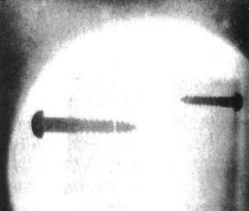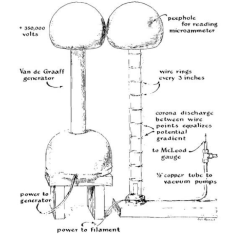It is funny how sometimes things you think are bad turn out to be good in retrospect. Like many of us, when I was a kid, I was fascinated by science of all kinds. As I got older, I focused a bit more, but that would come later. Living in a small town, there weren’t many recent science and technology books, so you tended to read through the same ones over and over. One day, my library got a copy of the relatively recent book “The Amateur Scientist,” which was a collection of [C. L. Stong’s] Scientific American columns of the same name. [Stong] was an electrical engineer with wide interests, and those columns were amazing. The book only had a snapshot of projects, but they were awesome. The magazine, of course, had even more projects, most of which were outside my budget and even more of them outside my skill set at the time.
If you clicked on the links, you probably went down a very deep rabbit hole, so… welcome back. The book was published in 1960, but the projects were mostly from the 1950s. The 57 projects ranged from building a telescope — the original topic of the column before [Stong] took it over — to using a bathtub to study aerodynamics of model airplanes.
X-Rays

However, there were two projects that fascinated me and — lucky for me — I never got even close to completing. One was for building an X-ray machine. An amateur named [Harry Simmons] had described his setup complaining that in 23 years he’d never met anyone else who had X-rays as a hobby. Oddly, in those days, it wasn’t a problem that the magazine published his home address.
You needed a few items. An Oudin coil, sort of like a Tesla coil in an autotransformer configuration, generated the necessary high voltage. In fact, it was the Ouidn coil that started the whole thing. [Harry] was using it to power a UV light to test minerals for flourescence. Out of idle curiosity, he replaced the UV bulb with an 01 radio tube. These old tubes had a magnesium coating — a getter — that absorbs stray gas left inside the tube.
The tube glowed in [Harry’s] hand and it reminded him of how an old gas-filled X-ray tube looked. He grabbed some film and was able to image screws embedded in a block of wood.

However, 01 tubes were hard to get even then. So [Harry], being what we would now call a hacker, took the obvious step of having a local glass blower create custom tubes to his specifications.
Given that I lived where the library barely had any books published after 1959, it is no surprise that I had no access to 01 tubes or glass blowers. It wasn’t clear, either, if he was evacuating the tubs or if the glass blower was doing it for him, but the tube was down to 0.0001 millimeters of mercury.
Why did this interest me as a kid? I don’t know. For that matter, why does it interest me now? I’d build one today if I had the time. We have seen more than one homemade X-ray tube projects, so it is doable. But today I am probably able to safely operate high voltages, high vaccums, and shield myself from the X-rays. Probably. Then again, maybe I still shouldn’t build this. But at age 10, I definitely would have done something bad to myself or my parent’s house, if not both.
Then It Gets Worse
The other project I just couldn’t stop reading about was a “homemade atom smasher” developed by [F. B. Lee]. I don’t know about “atom smasher,” but it was a linear particle accelerators, so I guess that’s an accurate description.

I doubt I have the chops to pull this off today, much less back then. Old refigerator compressors were run backwards to pull a rough vaccuum. A homemade mercury diffusion pump got you the rest of the way there. I would work with some of this stuff later in life with scanning electron microscopes and similar instruments, but I was buying them, not cobbling them together from light bulbs, refigerators, and home-made blown glass!
You needed a good way to measure low pressure, too, so you needed to build a McLeod gauge full of mercury. The accelerator itself is three foot long, borosilicate glass tube, two inches in diameter. At the top is a metal globe with a peephole in it to allow you to see a neon bulb to judge the current in the electron beam. At the bottom is a filament.
The globe at the top matches one on top of a Van de Graf generator that creates about 500,000 volts at a relatively low current. The particle accelerator is decidedly linear but, of course, all the cool particle accelerators these days form a loop.
[Andres Seltzman] built something similar, although not quite the same, some years back and you can watch it work in the video below:
What could go wrong? High vacuum, mercury, high voltage, an electron beam and plenty of unintentional X-rays. [Lee] mentions the danger of “water hammers” in the mercury tubes. In addition, [Stong] apparently felt nervous enough to get a second opinion from [James Bly] who worked for a company called High Voltage Engineering. He said, in part:
…we are somewhat concerned over the hazards involved. We agree wholeheartedly with his comments concerning the hazards of glass breakage and the use of mercury. We feel strongly, however, that there is inadequate discussion of the potential hazards due to X-rays and electrons. Even though the experimenter restricts himself to targets of low atomic number, there will inevitably be some generation of high-energy X-rays when using electrons of 200 to .300 kilovolt energy. If currents as high as 20 microamperes are achieved, we are sure that the resultant hazard is far from negligible. In addition, there will be substantial quantities of scattered electrons, some of which will inevitably pass through the observation peephole.
I Survived
Clearly, I didn’t build either of these, because I’m still here today. I did manage to make an arc furnace from a long-forgotten book. Curtain rods held carbon rods from some D-cells. The rods were in a flower pot packed with sand. An old power cord hooked to the curtain rods, although one conductor went through a jar of salt water, making a resistor so you didn’t blow the fuses.
Somehow, I survived without dying from fumes, blinding myself, or burning myself, but my parent’s house had a burn mark on the floor for many years after that experiement.
If you want to build an arc furnace, we’d start with a more modern concept. If you want a safer old book to read, try the one by [Edmund Berkeley], the developer of the Geniac.
